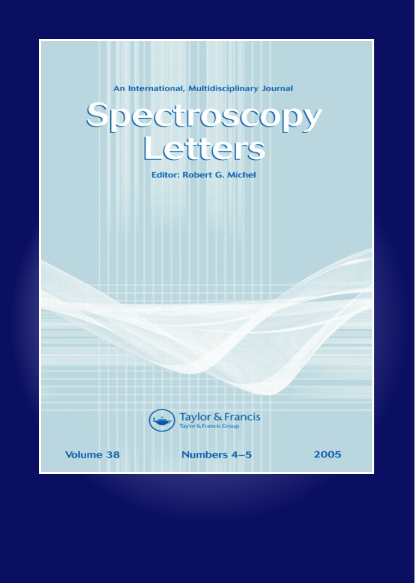Spectroscopic and chemometric characterization of green earth pigments employed by ancient Romans in the wall decoration of buildings in the X Regio (Venetia et Histria)
IF 1.6
4区 化学
Q3 SPECTROSCOPY
引用次数: 0
Abstract
Abstract In this work the study of the green pigments employed by ancient Romans in the decoration of 50 wall fragments from buildings of different ages located in seven archaeological sites of the Augustean X Regio (Venetia et Histria) is presented. The pigments are green earths—celadonite and glauconite, the latter associated to variable amounts of smectites—as found through mid-Infrared Fourier Transform Spectroscopy and as confirmed by Principal Component Analysis. The investigation was performed in suitable spectral ranges that while accounting for all the most intense absorptions of green earths allowed to minimize the influence of absorptions due to accessory minerals in the pigment ores or to the mineral species contained in the preparatory layers of the painted fragments (carbonates, quartz, kaolinite and gypsum) and sampled with the pigment. Three commercial green pigments consisting of the minerals celadonite and glauconite were also considered to check the soundness of the approach followed for the identification of the historical pigments and the reliability of the results obtained. For the first time it is shown that Principal Component Analysis is an effective tool to confirm the results of conventional spectroscopic analysis of the two green earths celadonite and glauconite.古罗马人在X区(威尼斯和史提亚)建筑墙壁装饰中使用的绿色泥土颜料的光谱和化学计量学特征
摘要在这项工作中,研究了古罗马人在装饰奥古斯都十区(Venetia et Histria)七个考古遗址中50个不同年代建筑的墙壁碎片时使用的绿色颜料。这些颜料是绿地球——青瓷石和海绿石,后者与不同数量的蒙脱石有关——通过中红外傅立叶变换光谱发现,并通过主成分分析得到证实。调查在适当的光谱范围内进行,在考虑到所有最强烈的绿土吸收的同时,允许最大限度地减少由于颜料矿石中的副矿物或油漆碎片(碳酸盐、石英、高岭石和石膏)的预备层中所含矿物种类引起的吸收的影响,并用颜料取样。还考虑了由矿物青瓷和海绿石组成的三种商业绿色颜料,以检查用于识别历史颜料的方法的可靠性和所获得结果的可靠性。首次表明,主成分分析是证实两种稀土青瓷和海绿石常规光谱分析结果的有效工具。
本文章由计算机程序翻译,如有差异,请以英文原文为准。
求助全文
约1分钟内获得全文
求助全文
来源期刊

Spectroscopy Letters
物理-光谱学
CiteScore
2.90
自引率
5.90%
发文量
50
审稿时长
1.3 months
期刊介绍:
Spectroscopy Letters provides vital coverage of all types of spectroscopy across all the disciplines where they are used—including novel work in fundamental spectroscopy, applications, diagnostics and instrumentation. The audience is intended to be all practicing spectroscopists across all scientific (and some engineering) disciplines, including: physics, chemistry, biology, instrumentation science, and pharmaceutical science.
 求助内容:
求助内容: 应助结果提醒方式:
应助结果提醒方式:


